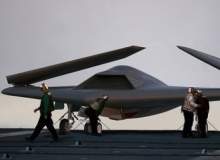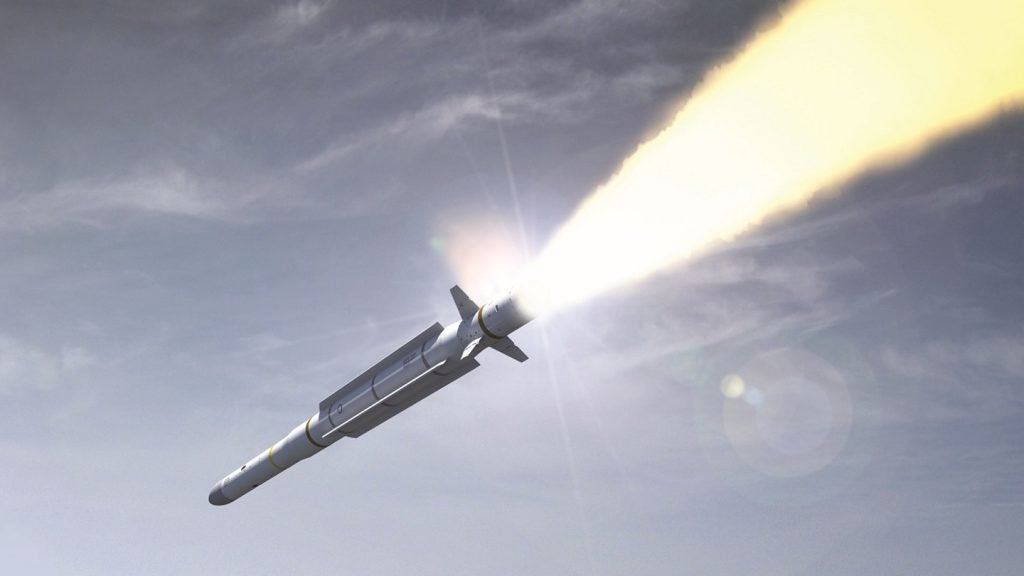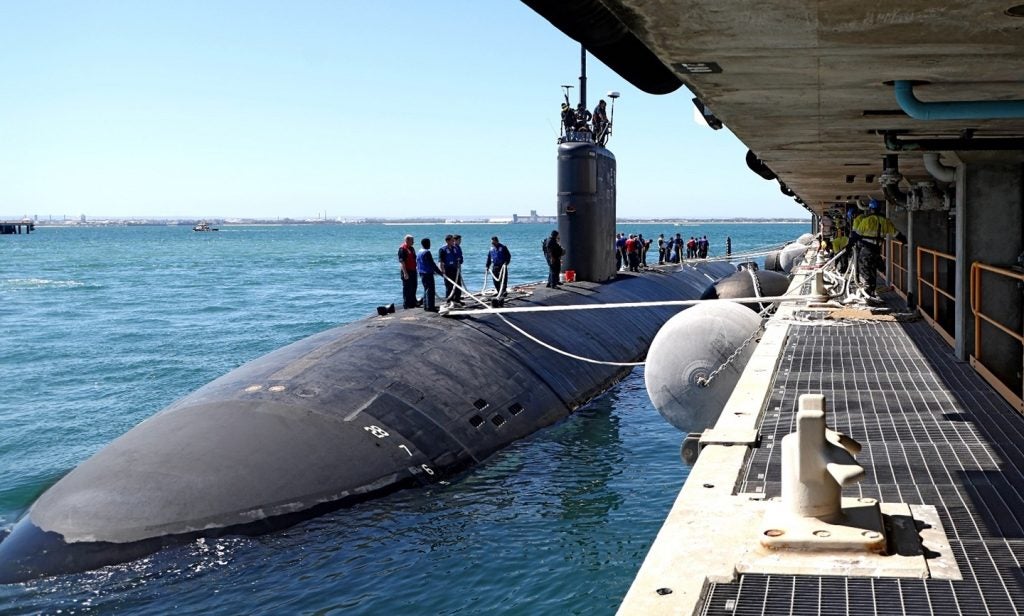
Amazon drone” height=”286″ src=”https://www.airforce-technology.com/wp-content/uploads/image-digitalinsightresearch/Archive/nri/airforce/AmazonPrimeAirL.jpg” title=”amazone drone” width=”430″ />
Just before Christmas last year, when much of Washington DC had emptied for the holidays, the Pentagon quietly released its Unmanned Systems Integrated Roadmap. The 160-page document details the Department of Defense’s (DoD) vision for the use of unmanned systems in the air, on land and at sea, over the next 25 years.
Bird-like reconnaissance drones, unmanned naval strike aircraft, solar-powered surveillance robots, and a network – or swarm – of unmanned systems working together is just some of the revolutionary technology being proposed. The roadmap even includes an operational vignette that vividly portrays how these capabilities could be used against a fictional rogue nuclear state.
Key drivers behind the new roadmap
Combat operations in Iraq and Afghanistan and a strategic shift to the Asia-Pacific region are two key drivers that demonstrate a growing need, and demand, for unmanned systems, the report explains. A third – and possibly most important – driver the roadmap identifies is continuing defence budget cuts.
Innovative solutions that are ‘affordable and cost-effective’ are imperative in a time of falling budgets, the roadmap says. Technologically, these solutions may include more interoperability between systems, improved communications, better resilience, greater autonomy and a further integration of weapons systems.
See Also:
The 2014 President’s Budget submitted to Congress last April shows spending on research, development, test and evaluation (RTDE) for unmanned systems will fall by 33.4% from the previous year. Only $6m will be spent on RTDE for unmanned ground systems in 2014.
How well do you really know your competitors?
Access the most comprehensive Company Profiles on the market, powered by GlobalData. Save hours of research. Gain competitive edge.

Thank you!
Your download email will arrive shortly
Not ready to buy yet? Download a free sample
We are confident about the unique quality of our Company Profiles. However, we want you to make the most beneficial decision for your business, so we offer a free sample that you can download by submitting the below form
By GlobalData"On the ground, [investment] less than $50m, in one of the most important technologies over the next 50 years, is dangerous," says Chris Mailey, vice-president of Knowledge Services at the not-for-profit Association for Unmanned Vehicle Systems International (AUVSI).
Mailey, who has studied the DoD’s unmanned budget in detail, says the most significant investments at the moment are in the US Navy’s UCLASS and BAMS programmes.
"This document is certainly part of the [unmanned] conversation, but it’s not the be all and end all," explains Mailey. "The key is, this is not a budget document, this is not a plan that the services have to execute financially…the services are free to make their own investment."
Related content
Future Vertical Lift: The end of the helicopter as we know it?
As the backbone for militaries across the world, the standard design for helicopters has not changed significantly for more than 50 years.
Weaponisation and autonomy; the rise of killer robots?
Out of all the technological solutions proposed for future unmanned systems, it is autonomy and weaponisation that continues to hit the headlines and divide opinion. The roadmap envisages systems which, rather than just execute a mission autonomously, can also perform it autonomously as well.
Simply put, a drone can be given a mission goal and it will decide itself how to achieve it. Mix this with increasing weaponisation and people begin to worry.
As the line between autonomy and weaponisation begins to blur, advocacy groups like Human Rights Watch have led high-profile campaigns with the aim of banning so-called ‘killer robots’.
"Clearly this document shows that the Pentagon believes that ever greater autonomy is both required, and desired," says Steve Goose, Human Right Watch’s (HRW) Arms Division director. Goose and HRW co-founded the International Campaign to Ban Landmines, which won the 1997 Nobel Peace Prize.
"At various places it also indicates that full autonomy, where you take the man out of the loop, is also desirable for the future. Where they are less clear is connecting that to weaponised systems, which for us is the key," explains Goose.
To address this, the Pentagon released the inconspicuously titled Directive 3000.09 in November 2012. The directive offers the first-known policy guidelines on autonomous and semi-autonomous functions in weapons systems – manned and unmanned.
Autonomous weapon systems "shall be designed to allow commanders and operators to exercise appropriate levels of human judgement over the use of force," the directive advised.
The roadmap and the future strategy of unmanned systems
The 2013 roadmap follows on from its last iteration in 2011 and "demonstrates a growing sophistication across the Pentagon in articulating the potential of unmanned systems," says Samuel Brannen, an analyst at the Centre for Strategic and International Studies, in a recent blog for War on the Rocks.
Yet for all the innovative vision seen in the roadmap, overall, it paints an ‘overly rosy picture’ of what is to come, Brannen warns. He adds: "Continued US dominance over the next decade will be undermined by defense budget cuts…and DoD’s lack of a coherent, resourced strategy for unmanned systems development, procurement and operational integration."
It is a worry for many policymakers in the US that, far from embracing cost-effective unmanned systems in a time of fiscal restraint, the services may actually be reverting back to a manned system mindset. The Air Force announced in 2012 that it will mothball its young fleet of Block 30 RQ-4 Global Hawks in favour of the manned U-2 spy plane.
At the same time, the USAF also cancelled its MQ-X programme, which looked at replacing the MQ-9 Reaper with an even more capable UAS. Even the number of Reapers – an Afghan workhorse which has clocked more than a million flights hours – to be procured has been halved.
Officials regularly sight the large budget cuts imposed on the DoD as reasons for swinging the axe. But a similar initiative to scrap expensive manned systems, like the A-10 Warthog, have come up against strong opposition within the air force and lobby groups outside.
Influential figures like Massachusetts Institute of Technology’s Missy Cummings, a former naval pilot and robotics expert, suggest a ‘terminal decline’ for the air force if it continues to procure and maintain expensive manned aircraft.
"[Unmanned aircraft…offer so much in terms of capability for so little money that they represent a way out for service’s force structure death spiral," Cummings wrote in a widely-read Armed Forces Journal article in 2012. "Leaders must recognise that manned aircraft is at a point of diminishing returns."
Pulling teeth: the manned vs. unmanned debate
To some, the roadmap still fails to properly evaluate manned versus unmanned systems. A vital debate is not being had.
"There needs to be key research in trade-offs of a manned system versus an unmanned system in different mission areas," says AUVSI’s Chris Mailey. "I believe there is a compelling case for using unmanned platforms throughout military operations, but I don’t think the military has done that research in an independent way that allows them to make good decisions."
In 2008, the-then Defense Secretary Robert Gates, in a speech to the Air War College, lamented the US Air Force’s unwillingness to adopt unmanned systems. He said his efforts to procure more ISR platforms for Afghanistan was ‘like pulling teeth’.
"There are things you can do with unmanned systems that you can’t do with manned systems," says Paul Scharre, a senior fellow at the Washington-based think-tank Centre for a New American Security. "You can send them out on missions that are extremely risky…to perform reconnaissance missions and they’re expendable."
"Those are new paradigms that the DoD are just starting to understand," explains Scharre.
Unmanned innovation outside the defence industry
This institutional restraint, along with falling budgets, across all the services has had a number of consequences. Firstly, the commercial sector is now firmly leading innovation in unmanned systems and robotics. Google‘s purchase of some of the world’s leading robotics companies in 2013, including Boston Dynamics, is evidence of this.
Other examples include Amazon’s audacious ‘Prime Air’ concept, a delivery-by-drone service showing that unmanned systems are not just about dropping bombs on terrorists – as the media narrative goes.
DoD could somehow incorporate these commercial endeavours but it "struggles broadly to incorporate innovation from outside [the] defense industry," says Brannen. "The potential exists for it to leverage this growing commercial activity during a downtime in its own investment…it’s not clear how it will succeed in doing so."
Secondly, and more ominously, it also opens up the opportunity for other nations, notably China and Russia – and even rogue states like Iran – to begin catching up to, and overtaking, the US’ lead in unmanned capabilities. And unlike the US’ restrictive export controls, these states have significant export industries which could send equipment to unfriendly states like Syria, for example.
These countries also don’t have an equivalent to DoD’s Directive 3000.09 – an uncomfortable thought.
All this means the future of the ubiquitous drone is clearly not as straightforward as we might think and serious hurdles remain until the technology truly proliferates. Documents like the 2013 roadmap, while setting out a detailed vision for the future, may lose some of its relevance in the greater debates over defence budgets and the true utility of unmanned systems versus their manned counterparts.
Follow Grant Turnbull on Google+


.gif)





